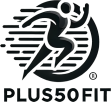Another week logged on the road to my first marathon, the Toronto Waterfront Marathon 2025, and this one felt like a lesson in patience, persistence, and adaptability. With temperatures stubbornly high and the dew point hanging over every session, I leaned on cadence work, nutrition tweaks, and some mental grit to carry me through.

Workouts (Speed/Threshold/Tempo)
Zone 2 to Zone 4 Progression Run – August 6, 2025
I tested the gears here, nudging from Z2 into Z4. The beats kept me honest, though Z4 reminded me just how much respect faster paces demand in summer heat.
What The Numbers Say:
- rTSS showed a steady rise through the zones.
- Pa:HR crept into double digits, expected in warm conditions.
- HR vs pace IF aligned well until the late efforts, showing aerobic strength holding until fatigue set in.
Takeaway: I’m getting more comfortable sustaining higher gears, but I’ll need to keep an eye on recovery if I want to hit these progressions cleanly come fall.
Marathon Pace Run – August 8, 2025
MP work in summer is a special kind of “treat”. I ran this one with precision, fueled smart, and managed to hold steady despite the furnace-like humidity.
What The Numbers Say:
- IF (pace) and IF (HR) were close, showing pacing discipline.
- VAM and cadence trends showed consistent rhythm even on rolling terrain.
- Dew Point “What If” suggests October conditions would’ve made MP feel significantly more sustainable – roughly 15–20 sec/km faster.
Takeaway: Heat makes MP feel like threshold. October will be the real proving ground.
Easy Runs & Long Run
Zone 2 Easy Run – August 5, 2025
Cadence felt smooth, RPE low. A controlled start to the week, fueling with MCT oil and Nuun.
Takeaway: A confidence-builder – effortless Zone 2 days keep the block ticking.
Zone 2 Easy Run – August 9, 2025
Another solid Z2 reset. Nothing flashy, just rhythm and routine.
Takeaway: Small wins stack. Runs like these make marathon legs possible.
Zone 2 Long Run (with Walking Breaks) – August 10, 2025
The week wrapped with a humid long run. I gave myself permission to walk inclines and during fueling. That choice turned a potential slog into a steady, manageable outing.
What The Numbers Say:
- Pa:HR was manageable, showing aerobic control despite the conditions.
- Fueling breaks didn’t sabotage cadence or pace rhythm.
- Dew Point “What If” pace suggests this same effort would’ve been ~20 sec/km smoother in October weather.
Takeaway: Walking was strategy, not surrender. It kept the long run productive and confidence-boosting.
Conclusion
This week was less about flashy numbers and more about making smart adjustments: resetting cadence with Drum Buddy, testing nutrition in the heat, and learning when to hold back or walk. The “dew point what-if” paces give me confidence that once fall weather hits, these runs will translate into faster, more comfortable sessions.
Recap, Recover, Relax & Ready.
